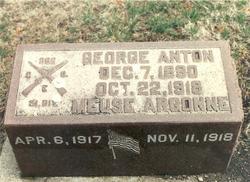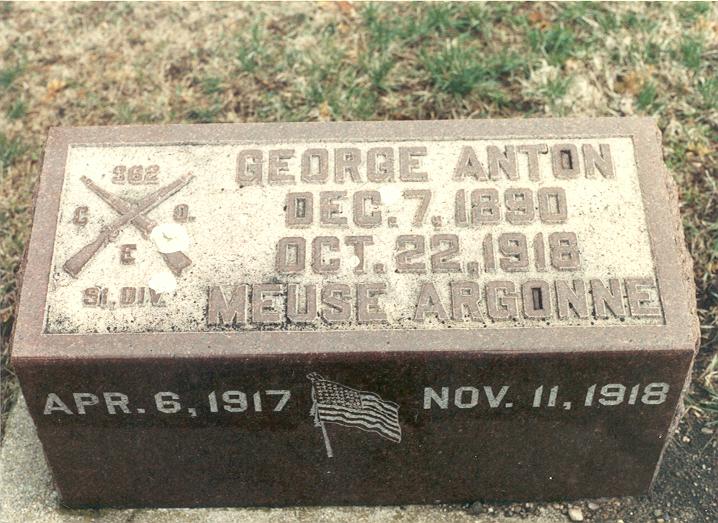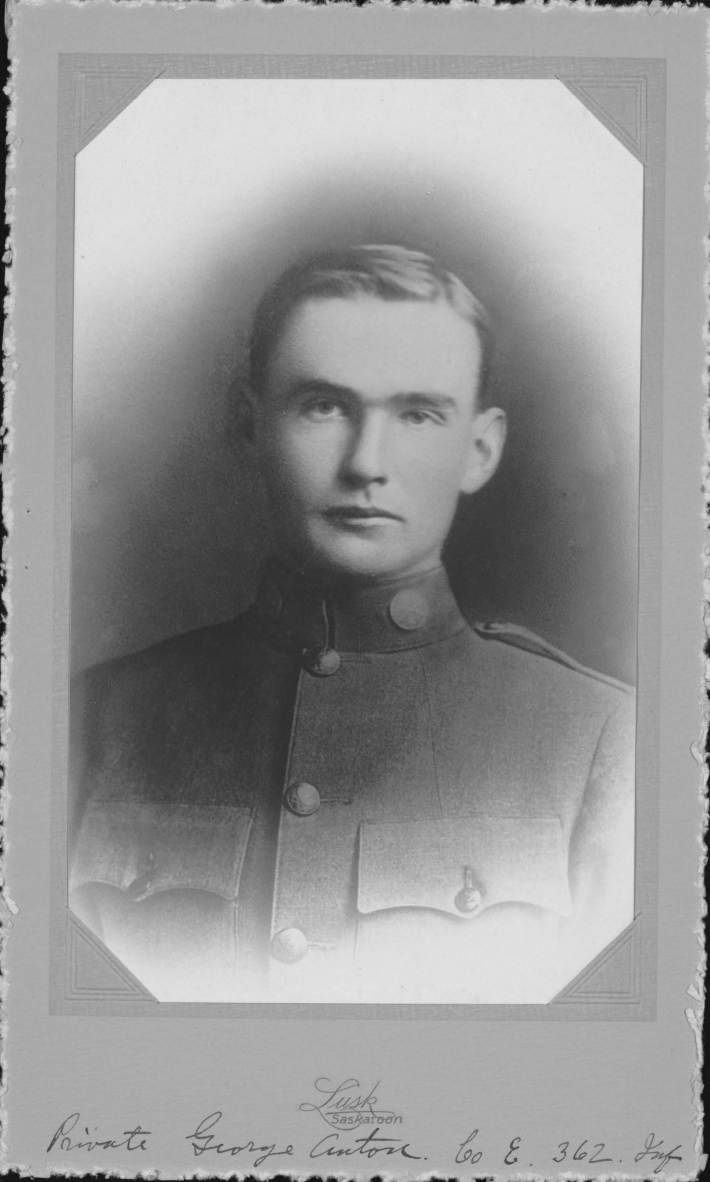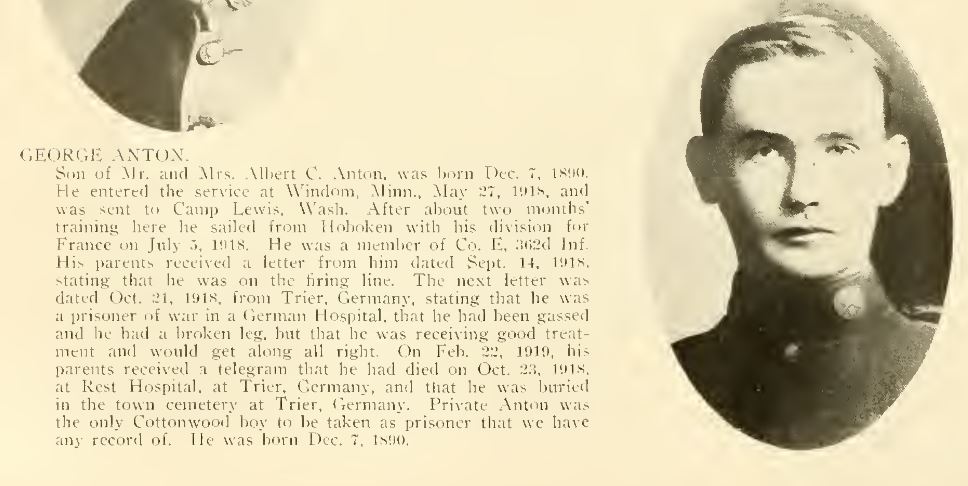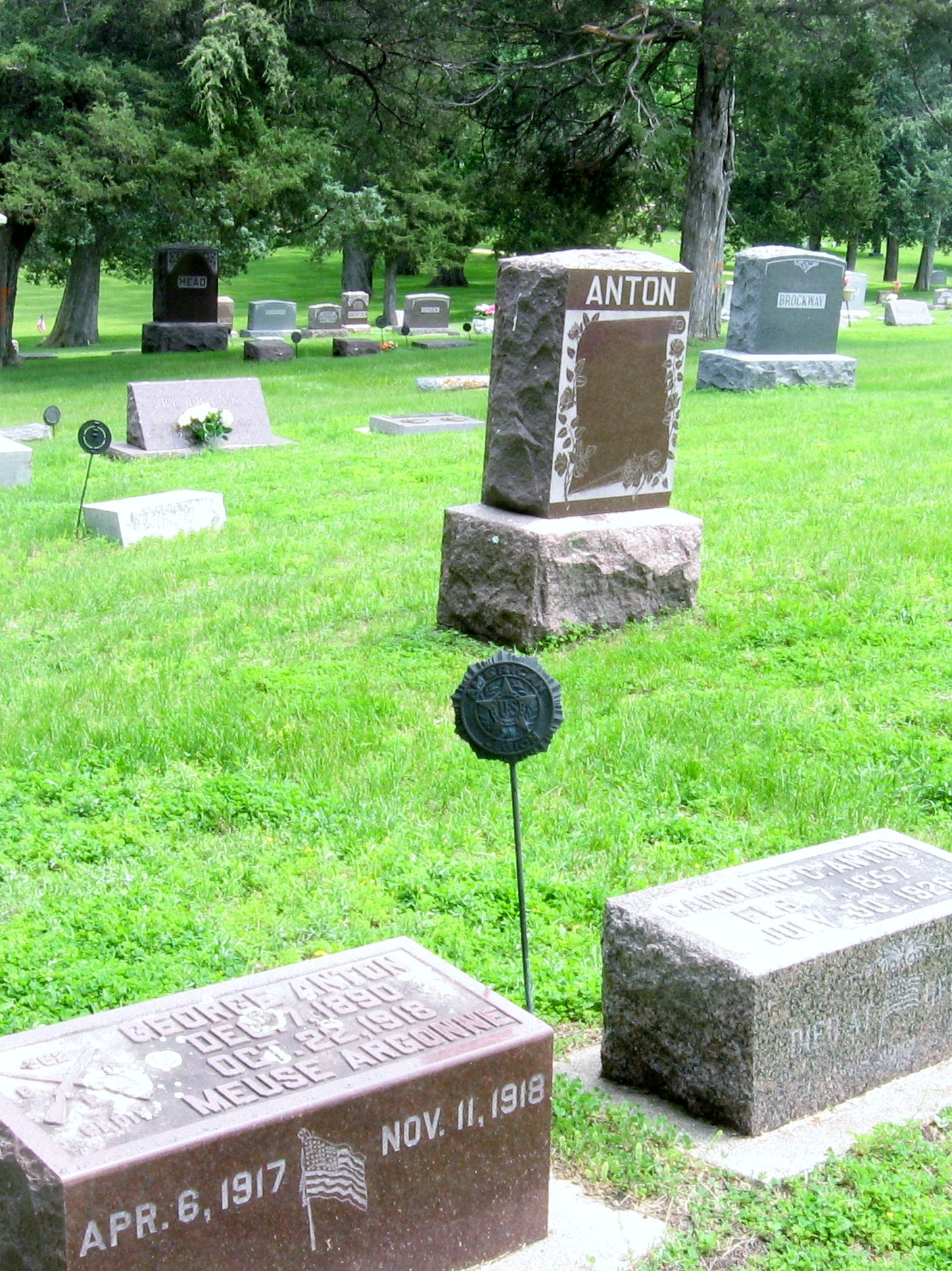Son of Mr. and Mrs. Albert C. Anton, was born Dec. 7, 1890. He entered the service at Windom, Minn., May 27, 1918, and was sent to Camp Lewis, Wash. After about two months' training here he sailed from Hoboken, NJ with his division for France on July .5, 1918. He was a member of Co. E, 362d Inf. His parents received a letter from him dated Sept. 14, 1918, stating" that he was on the firing line. The next letter was dated Oct. 21, 1918, from Trier, Germany, stating that he was a prisoner of war in a German Hospital,that he had been gassed and he had a broken leg, but that he was receiving good treatment and would get along all right. On Feb. 22, 1919, his parents received a telegram that he had died on Oct. 23, 1918. At Rest Hospital, at Trier, Germany, and that he was buried in the town cemetery at Trier, Germany. Private Anton was the only Cottonwood boy to be taken as prisoner that we believe any record of.
The 91st Division was constituted on 5 August 1917 at Camp Lewis, Washington, near Tacoma, the division soon thereafter departed for England in the summer of 1918. In September 1918, the division's first operation was in the St. Mihiel Offensive in France. Serving under the U.S. Army's V Corps, the division fought in the Meuse-Argonne Offensive and successfully helped to destroy the German First Guard Division and continued to smash through three successive enemy lines.
Twelve days before the end of World War I, the division, as part of the VII Corps of the French Sixth Army, helped drive the Germans east across the Escaut River. The division was awarded separate campaign streamers for its active role in the Lorraine, Meuse-Argonne and Ypres-Lys campaigns.
In 1919, the 91st was inactivated at the Presidio of San Francisco. After being reconstituted in 1921 as part of the Organized Reserves, the division then served as an administrative control center for the next 21 years.
Son of Mr. and Mrs. Albert C. Anton, was born Dec. 7, 1890. He entered the service at Windom, Minn., May 27, 1918, and was sent to Camp Lewis, Wash. After about two months' training here he sailed from Hoboken, NJ with his division for France on July .5, 1918. He was a member of Co. E, 362d Inf. His parents received a letter from him dated Sept. 14, 1918, stating" that he was on the firing line. The next letter was dated Oct. 21, 1918, from Trier, Germany, stating that he was a prisoner of war in a German Hospital,that he had been gassed and he had a broken leg, but that he was receiving good treatment and would get along all right. On Feb. 22, 1919, his parents received a telegram that he had died on Oct. 23, 1918. At Rest Hospital, at Trier, Germany, and that he was buried in the town cemetery at Trier, Germany. Private Anton was the only Cottonwood boy to be taken as prisoner that we believe any record of.
The 91st Division was constituted on 5 August 1917 at Camp Lewis, Washington, near Tacoma, the division soon thereafter departed for England in the summer of 1918. In September 1918, the division's first operation was in the St. Mihiel Offensive in France. Serving under the U.S. Army's V Corps, the division fought in the Meuse-Argonne Offensive and successfully helped to destroy the German First Guard Division and continued to smash through three successive enemy lines.
Twelve days before the end of World War I, the division, as part of the VII Corps of the French Sixth Army, helped drive the Germans east across the Escaut River. The division was awarded separate campaign streamers for its active role in the Lorraine, Meuse-Argonne and Ypres-Lys campaigns.
In 1919, the 91st was inactivated at the Presidio of San Francisco. After being reconstituted in 1921 as part of the Organized Reserves, the division then served as an administrative control center for the next 21 years.
Family Members
Sponsored by Ancestry
Advertisement
Records on Ancestry
Advertisement
